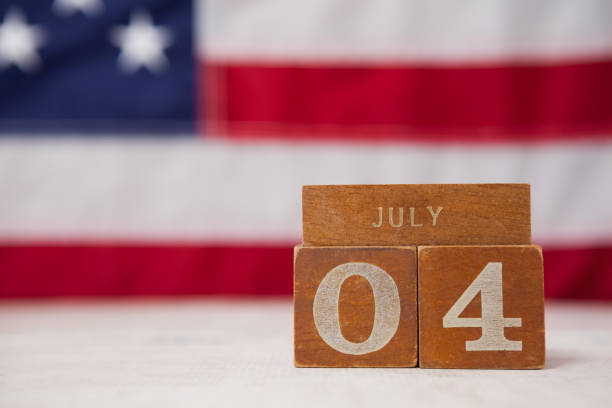After independence, the Indian legal system was impacted by the last quarter of the 20th century. The declaration of national emergency by the Indian government in 1975 was a totally unexpected adventure for India’s people. When discussing the 75 years of Indian independence, the tug-of-war between political leaders and the damage control of the judiciary are two phases that deserve to be mentioned. During these 25 years of Indian Independence, we saw many instances where freedom of expression was empowered. What happened to the Indian law between 1973 and 1997? Explore the legends of Indira’s murder, Indra Sawhney and Maneka Gandhi. After independence, the Indian legal system was shaped by these cases.
The Middle Piece of the 75 Years of Indian Independence Journey
Bennett Coleman ([1]) is a case law classic from 1973 that established the rights of the press under Article 19 (1)(a)- freedoms of expression and speech against reasonable restrictions. Kesavananda Bharat case [2] was another landmark in the Indian legal system. It still holds a record for having the largest Supreme Court bench with 13 judges. The court ruled that parliament can amend any part or all of the Constitution, including fundamental rights, as long as the basic structure and essential features remain. In the same year, the Criminal Procedure Code came into force.
Water (Prevention and Control of Pollution) Act 1974 was a saving grace for the environment in India. The 35th Amendment of the Constitution of India granted Sikkim the title of ‘associated state of India.’
1975 played a key role in the empowerment of democracy and Indian law after independence. The 39th Amendment of the Indian Constitution was intended to protect the Indian judiciary from being affected by the election of constitutional leaders such as the Prime Minister, President, Vice-President, and Lok Sabha Speaker. Raj Narain [3] argued in court that the Amendment changed the fundamental structure theory outlined in Kesavanda Bhati [4]. The Supreme Court upheld Raj Narain’s argument and declared Article 329A clause four unconstitutional. Before the Right to Information was created, Raj Narain’s case led the Supreme Court to consider the right to seek information under Article 19(1)(a). This included matters of public concern.
1976: The Indian Constitution underwent a major overhaul this year when the entire country was placed under emergency orders. This Amendment 42th brought about a number of significant changes. This is why the 42nd Amendment is sometimes called a Mini Constitution. This Amendment brought about many changes, including the inclusion of fundamental duties and words like “Socialist, secular, and Integrity” in the preamble. In cases like Lalai Singh Yadav [5], the right to freedom of expression and speech was still upheld during the constitutional emergency. The state must lay out the grounds for forfeiture if there is any.
1977: In the case of the State of Rajasthan V. Union of India [6], another court of law confirmed that a ‘President’s satisfaction under Article 356, for state emergency, is contestable. These two conditions are either that the joy violated constitutional provisions or was not made in good faith. It is based entirely on extraneous reasons. After independence, it became a major issue for the Indian legal system. Maneka Gandhi ([7]) filed a writ in 1978 when the passport office confiscated her passport for no reason. She claimed that these orders violated her fundamental rights as outlined by Articles 14, 19,(1)(a) and (d), and 21 of the Indian Constitution. The case of A.K. Gopalan’s case [8] and a broader scope of fundamental rights for Indian citizens. The 44th Amendment of the Constitution, on the other hand, introduced some strict checks before a Government announces a national emergency, which justifies 75 years of Indian Independence, achievements, challenges, and aspirations.
1979 was a crucial year for those who left their families, towns, and homes to work in the big cities. In India, the Inter-State Workmen Act regulates conditions for inter-state migrants. In the same year, in M. Karunanidhi [9], the apex Court established that a Chief Minister is a public employee in terms of salary or any other duties.
1980: The Minerva Mills Case [10] brought an end to the struggle between the parliament and the executive to amend the Constitution. The court ruled that the parliament can amend the Constitution, but only within the limits set out in the Constitution of India.
1981 was a landmark year for freedom of speech due to the S.P. Gupta [11], which is also known as the first Judges Transfer Case. The Supreme Court overruled the Central Government’s objections to disclosing documents related to the appointment and transfers of judges in India. The Air (Prevention and Control of Pollution) Act of 1981 set a new benchmark for the environment.
The Power of Attorneys Act, which permits one person to act on behalf of another for certain legal matters, was passed this year. Chit Fund Act, a law to regulate Indian chit-fund transactions, was implemented in order to safeguard financial transactions. In the case of the People’s Union (1982) [12], the Supreme Court elaborated Article 23 and allowed workers to reach the Supreme Court directly.
D.S. Nakara (13] was the case that led to a pension scheme being declared unconstitutional because it discriminated against people born before a certain date. It was a milestone for the 75th anniversary of India’s independence and the evolution of its law.
Bhopal, 1984: A fatal gas leak [14] caused the deaths of hundreds of innocents. The Supreme Court ordered the foreign company to pay $470 million in damages. Indira Gandhi’s assassination by her security personnel shook the nation.
The Shah Bano case [15] of 1985 is a classic example of preserving welfare by using secular laws to combat a religion-bound mindset. In this case, maintenance was awarded to a divorced Muslim woman aged 62. The Bhopal Gas Leak Disaster Act of 1985 provided relief to victims of the Bhopal Gas Tragedy.
The Supreme Court of India upheld religious freedoms over the national anthem in 1986. In the Karnataka Court hijab judgment, it was mentioned that Bijoe [16] is a case that explains essential religious practices. In the year 2000, the first consumer protection law was passed. It has been replaced with the Consumer Protection Act 2019.
1987: The Supreme Court recognized the principle of “Absolute liability” after the instant case of an oleum leak by Shriram Foods and Fertilisers [17]. For some territorial reorganization, the Goa, Daman, and Diu Reorganisation Act of 1987 was introduced.
Indira’s murder case [18] shook up the nation in 1988. This case was a landmark in the history of criminal justice, as it involved the rights of the accused. The case has remained iconic for the past 75 years since India gained its independence. The Prevention of Corruption Act came into force to combat the increasing incidences of corruption in India.
1989: This year was a confirmation of the protection of the rights of oppressed groups through the Scheduled Castes (Prevention of Atrocities) Act 1989. In India, the case of Parmanand Kathara [19] increased protection against medical emergencies. The Supreme Court of India made it mandatory for doctors and hospitals (public as well as private) to offer immediate medical assistance for road accident victims.






Leave a Reply